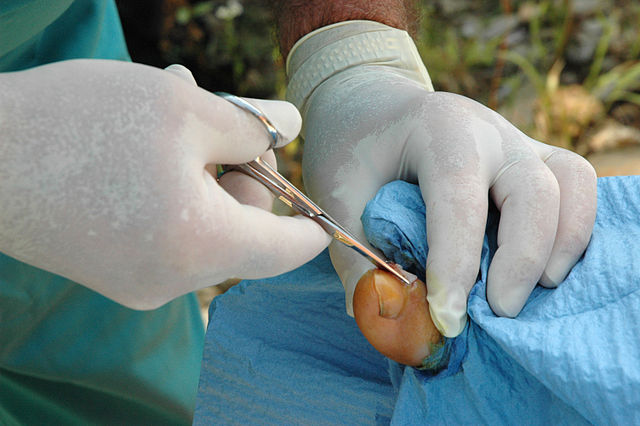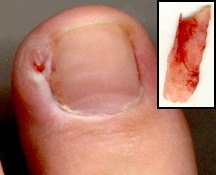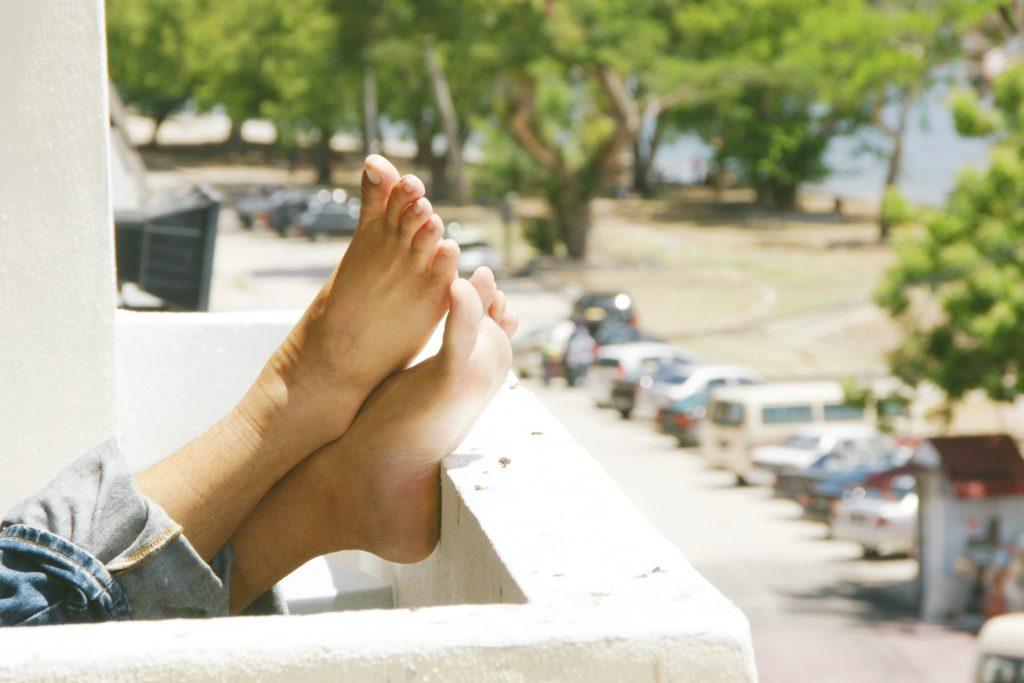Toenails are made from keratin, which is a tough protein your body naturally produces.
Toenails help prevent injuries to our toes, but did you know they also help the sensitivity of our feet? This assists us in maintaining balance and spatial awareness as we walk.

Did you know that some scientists think we may eventually evolve away from toenails? They are considered by some to be a vestigial part of evolution, just like our tail bones and the appendix.
No matter their use or how long they’ll stick around, sometimes our toenails can have issues that lead to pain or abnormalities. If this is the case, you may need to have your toenails removed.
Contents
Why Would You Need a Toenail Removal?
Toenail removal isn’t a possibility many of us consider, but it’s actually a common procedure.
Recurring problems such as ingrown toenails, toenail fungus, or “ram’s horn” nails are often fixed by permanent toenail removal, as well as other issues such as toenail warts or tumors.
Toenail fungus is the most common reason for toenail removal. Eliminating the nail entirely can be the only way to fix these issues, and your podiatrist will know best if this is right for you.
The toenail removal procedure is pretty straightforward; it’s a surgical subtraction of part or all of the nail and is generally considered a very minor procedure.
Your podiatrist may recommend it if you are diabetic or immune compromised and have a fungal infection, in order to prevent it from worsening or spreading to neighboring toes.
Partial nail removal might also be done as a diagnostic for other problems, such as testing for a biopsy. Whatever the reason behind it, when it’s time for the nail to go, it has to go.
What can you expect from the experience?
How to Remove a Toenail at Home
If your toenail is simply dead, you can remove it at home. A nail may die due to a fungal infection, which causes the nail to lift from the bed over time.
It’s generally very painful, and you should seek medical treatment to help prevent the infection from spreading.
A nail can also die from trauma to the area. The word ‘trauma’ is somewhat misleading; while this may be from an injury or accident, it can also be caused by wearing shoes that are slightly too small.
The constant pressure will cause your nail to get jammed slightly with each step, gradually making it loosen from the bed. This is relatively common for people who go running or exercise for long periods of time.
Shoes that are too loose can cause the same problem, as when your foot slides forward, your toe will hit the front of your shoe over and over again. This sort of issue usually happens to the big toe.
A blister under the nail may also cause it to lift away and die. If you notice a blister, you must treat this before the new nail grows in, or it can cause further abnormalities.
How to Know If Your Toenail is Dead?
Discoloration is the easiest way to tell; it may look black or bruised. If you have a fungal infection, you may notice that your nail has a greenish tint to it.
As the nail dies, it will become more brittle and crumbly, have a distorted shape, or look as if it is peeling up from the bed. A dead toenail should be removed to allow a healthy one to take its place.
If your podiatrist isn’t concerned and you feel comfortable, you can remove it yourself.
The Toenail Removal Process
To remove the dead nail at home, you’ll need to gather a few tools first:
- Warm water and soap.
- Gloves (preferably latex).
- Sterile, stainless steel nail clippers.
- Sterilized tweezers.
- Antibiotic ointment or gel.
- Clean gauze.
Once you have all of your supplies together, wash your hands and put on the gloves. Then, wash the skin and surrounding area of the dead toenail as completely as you can.
Once the dead nail is gone, the area underneath will be very prone to infection, so it is important to keep it as clean and sterile as possible. Then, with your sterilized nail clippers, trim the nail slowly by cutting away the dead pieces.

Once you’ve removed as much as you can with the clippers, it’s time to pull away the rest of the nail. As long as it’s really dead, this should be an easy process.
Many people might find it uncomfortable to do this on their own, so you can ask a family member or close friend.
When you start to pull the nail, you should feel no pain and very little resistance. Take hold of the nail and gently wiggle it from side to side. In a few minutes, the nail should come out.
If you yank or pull, you can damage the surrounding skin, or cause the nail to break, which makes removal more difficult.
If, for whatever reason, you’re only able to remove a part of the nail, don’t force it to come off. Wrap the nail in clean gauze and let the wound heal for a day or two before coming back to finish the job.
Once you have the nail completely removed, clean the area again completely. Apply your antibiotic, and then wrap the entire thing in clean gauze.
As it starts to heal, you may experience some minor pain. This is normal. However, if you start to see inflammation or oozing in the days or weeks afterwards, consult your doctor or podiatrist, as this may be a sign of a more serious infection.
As soon as you see a sign of infection, make sure you consult your doctor; otherwise, you could end up with damage to the new nail as well.
If your toenail is not dead, but your podiatrist thinks that it needs to be partially or completely removed anyway, you will likely go in for toenail removal surgery at your doctor’s clinic.
Toenail Removal Surgery
Toenail removal surgery can be done either with partial removal of the nail (called debridement) or removal of the entire nail (called avulsion.)
This surgery can be performed on any nail, but big toenail removal is pretty common, especially from traumatic injuries. These surgeries are safe, easy and can be done in less than twenty minutes at your doctor’s local clinic.
Your doctor will likely inject a local anesthetic into the affected area, and you will not feel any pain. In fact, you typically won’t feel anything in that area at all.
Then, the doctor will loosen the folds of skin around the nail and separate the nail from the skin by sliding a tool beneath the nail.
Occasionally, patients will feel some pain during the procedure, but it is uncommon. If your tolerance is low, discuss this with your doctor, as they may be able to apply more numbing agents.
In the cases of permanent toenail removal, the doctor will destroy the nail matrix. The nail matrix is the part of your toe that produces keratin, which creates new nails.
Most commonly, the matrix is destroyed chemically. This is called chemical cauterization, where phenol is applied to the matrix to dissolve it. It’s generally a very effective method, but a few patients do still have their nails grow back even after this procedure is done.
If the chemical cauterization does not work, your doctor may perform a surgical matrixectomy. A flap of skin is surgically created over the nail matrix, and then after retracting the flap, the nail matrix is removed.

Toenail Removal Aftercare and Recovery
Permanent toenail removal recovery time can vary by individual procedures, but generally speaking, the wound should heal within a few weeks.
Your doctor should provide you with clear instructions for care after your surgery, but here are some good guidelines to follow:
- In the first 24-48 hours, wash the wound with clean, warm water twice a day, and change the dressing completely when you do so. Don’t use anything that will dry out the skin, such as rubbing alcohol, as this may delay healing.
- Regularly apply petroleum jelly or Vaseline in a thin layer over the wound, and then put a nonstick bandage on top.
- With a full nail avulsion, you may not need antibiotics. Dress the wound in a nonstick gauze and keep the foot elevated for the first 24 hours. Always wash your hands with soap and warm water before you touch the wound to decrease the risk of infection. After 24 hours, you may soak the toe in warm water in between re-dressings.
- In 12-18 months, if your nail matrix was not removed, your toenail should grow back. Do not be surprised if the new nail looks different than your other toenails.
If at any point in time you have unusual pain, heavy bleeding, swelling, or anything else unusual, consult your doctor immediately. Any sign of infection could lead to further complications.
Risks
As with any surgical procedure, there are some risks. The most prominent risks include:
- Pain at the site of the removal
- Infection at the site
- Abnormal nail growth once the nail returns
The best way to prevent complications is to keep the wound clean and dry. Generally speaking, side effects and risks are minimal. Usually, people get the results they and their doctors are aiming for.
Once your new nail grows in, you can use a commercial nail-strengthening product to help keep it from breaking or becoming infected as it grows.
Make sure you always consult your doctor before using any products on the wound.
Do you have any tips on ingrown toenail removal?

